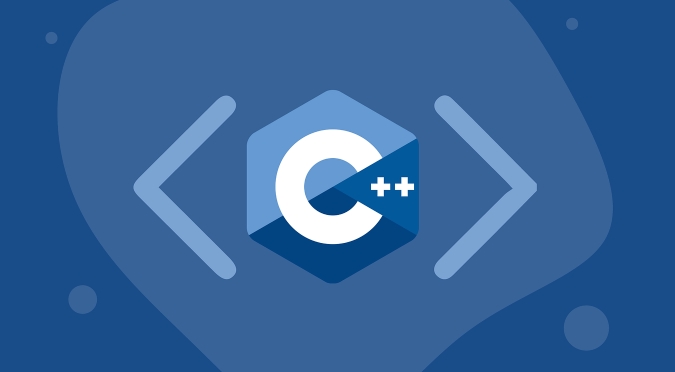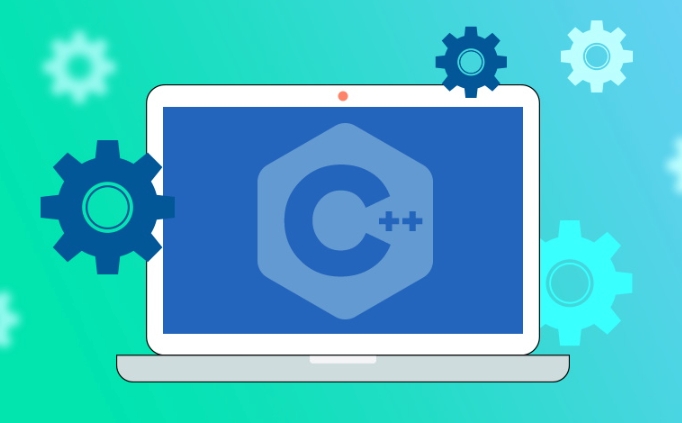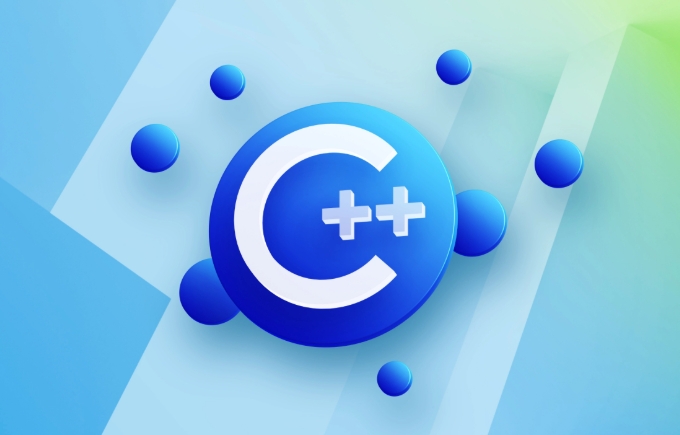Factory mode is a creative design mode used to uniformly manage the creation of objects. It hides the instantiation details of specific classes through factory classes to improve scalability and maintenance; its core structure includes abstract product classes, specific product classes and factory classes; for example, in C, you can inherit the Shape base class and return the Circle or Rectangle instance according to parameters by ShapeFactory; use factory mode to decouple object creation and use, facilitate expansion and unified management creation logic; practical applications such as ParserFactory can create corresponding parsers based on file format; it is recommended to use smart pointers to handle error types during implementation, and consider using the automatic registration mechanism of mapping tables to optimize multi-type management.

Factory mode is a very practical design mode in C, especially suitable for scenarios where different objects need to be created dynamically based on parameters. It is responsible for the creation of objects through a factory class, hiding the instantiation details of concrete classes, and improving the scalability and maintainability of the code.

What is the factory model?
Factory Pattern is a creative design pattern that provides a unified way to create objects without exposing specific implementation classes. The advantage of this is that when the requirements change, you only need to modify the factory parts without affecting the code using these objects.

For example, you have a program that needs to create different shapes (shapes) according to different inputs, such as circles (Circle), rectangles (Rectangle), etc. At this time, you can use factory mode to centrally manage these creation logic.
The basic structure of the factory model
To implement the factory model, the following components are usually required:

- Abstract product class : defines the interface or base class of the product.
- Specific product category : Inherited from abstract product category to realize specific functions.
- Factory class : Contains methods used to create products, returning different product instances according to input parameters.
Here is a simple example:
#include <iostream>
#include <memory>
using namespace std;
// Abstract product class Shape {
public:
virtual void draw() = 0;
virtual ~Shape() {}
};
// Specific product class Circle: public Shape {
public:
void draw() override {
cout << "Draw Circle" << endl;
}
};
class Rectangle : public Shape {
public:
void draw() override {
cout << "Draw Rectangle" << endl;
}
};
// Factory class ShapeFactory {
public:
unique_ptr<Shape> createShape(const string& type) {
if (type == "circle") {
return make_unique<Circle>();
} else if (type == "rectangle") {
return make_unique<Rectangle>();
}
return nullptr;
}
};In this way, the caller only needs to know the incoming string "circle" or "rectangle" to get the corresponding graphic object.
Benefits of using factory model
- Decoupled object creation and use : The user does not need to care about how the object is created, but only needs to tell the factory what type I want.
- Easy to expand : If you want to add a Triangle type in the future, you only need to add a new class and modify the factory method, and you don't need to move other code.
- Unified portal : All creation logic is centralized in the factory for easy management and debugging.
Let's give an example in actual development:
You are making a drawing software that supports importing multiple graphics formats (such as SVG, PNG, PDF). You can define a parser class for each format and then create the corresponding parser through a ParserFactory. In this way, when adding new file formats in the future, you only need to add judgment logic to the factory.
Things to note when implementing
It is recommended to use smart pointers for return types : For example,
unique_ptris used in the above example to avoid memory leakage.Error handling mechanism : If the type passed in is not supported, there should be a clear prompt or a null pointer should be returned by default.
Is the factory method static?
If you do not plan to save the factory's state, you can make
createShapea static method, which makes it more convenient to call:static unique_ptr<Shape> createShape(const string& type);
Consider using mapping tables to automatically register (advanced): If you have many products, you can use map
> to automatically register to create functions to avoid a bunch of if-else.
Basically that's it. The factory model looks simple, but it is very practical in actual projects, especially when building large systems, which can effectively reduce the coupling between modules.
The above is the detailed content of C factory pattern example. For more information, please follow other related articles on the PHP Chinese website!

Hot AI Tools

Undress AI Tool
Undress images for free

Undresser.AI Undress
AI-powered app for creating realistic nude photos

AI Clothes Remover
Online AI tool for removing clothes from photos.

Clothoff.io
AI clothes remover

Video Face Swap
Swap faces in any video effortlessly with our completely free AI face swap tool!

Hot Article

Hot Tools

Notepad++7.3.1
Easy-to-use and free code editor

SublimeText3 Chinese version
Chinese version, very easy to use

Zend Studio 13.0.1
Powerful PHP integrated development environment

Dreamweaver CS6
Visual web development tools

SublimeText3 Mac version
God-level code editing software (SublimeText3)
 How to develop AI-based text summary with PHP Quick Refining Technology
Jul 25, 2025 pm 05:57 PM
How to develop AI-based text summary with PHP Quick Refining Technology
Jul 25, 2025 pm 05:57 PM
The core of PHP's development of AI text summary is to call external AI service APIs (such as OpenAI, HuggingFace) as a coordinator to realize text preprocessing, API requests, response analysis and result display; 2. The limitation is that the computing performance is weak and the AI ecosystem is weak. The response strategy is to leverage APIs, service decoupling and asynchronous processing; 3. Model selection needs to weigh summary quality, cost, delay, concurrency, data privacy, and abstract models such as GPT or BART/T5 are recommended; 4. Performance optimization includes cache, asynchronous queues, batch processing and nearby area selection. Error processing needs to cover current limit retry, network timeout, key security, input verification and logging to ensure the stable and efficient operation of the system.
 C function example
Jul 27, 2025 am 01:21 AM
C function example
Jul 27, 2025 am 01:21 AM
Functions are the basic unit of organizing code in C, used to realize code reuse and modularization; 1. Functions are created through declarations and definitions, such as intadd(inta,intb) returns the sum of the two numbers; 2. Pass parameters when calling the function, and return the result of the corresponding type after the function is executed; 3. The function without return value uses void as the return type, such as voidgreet(stringname) for outputting greeting information; 4. Using functions can improve code readability, avoid duplication and facilitate maintenance, which is the basic concept of C programming.
 C decltype example
Jul 27, 2025 am 01:32 AM
C decltype example
Jul 27, 2025 am 01:32 AM
decltype is a keyword used by C 11 to deduce expression types at compile time. The derivation results are accurate and do not perform type conversion. 1. decltype(expression) only analyzes types and does not calculate expressions; 2. Deduce the variable name decltype(x) as a declaration type, while decltype((x)) is deduced as x due to lvalue expression; 3. It is often used in templates to deduce the return value through tail-set return type auto-> decltype(t u); 4. Complex type declarations can be simplified in combination with auto, such as decltype(vec.begin())it=vec.begin(); 5. Avoid hard-coded classes in templates
 C fold expressions example
Jul 28, 2025 am 02:37 AM
C fold expressions example
Jul 28, 2025 am 02:37 AM
C folderexpressions is a feature introduced by C 17 to simplify recursive operations in variadic parameter templates. 1. Left fold (args...) sum from left to right, such as sum(1,2,3,4,5) returns 15; 2. Logical and (args&&...) determine whether all parameters are true, and empty packets return true; 3. Use (std::cout
 C range-based for loop tutorial
Jul 27, 2025 am 12:49 AM
C range-based for loop tutorial
Jul 27, 2025 am 12:49 AM
C's range-basedfor loop improves code readability and reduces errors by simplifying syntax. Its basic structure is for(declaration:range), which is suitable for arrays and STL containers, such as traversing intarr[] or std::vectorvec. Using references (such as conststd::string&name) can avoid copy overhead and can modify element content. Notes include: 1. Do not modify the container structure in the loop; 2. Ensure that the range is effective and avoid the use of freed memory; 3. There is no built-in index and requires manual maintenance of the counter. Mastering these key points allows you to use this feature efficiently and safely.
 C binary search tree example
Jul 28, 2025 am 02:26 AM
C binary search tree example
Jul 28, 2025 am 02:26 AM
ABinarySearchTree(BST)isabinarytreewheretheleftsubtreecontainsonlynodeswithvalueslessthanthenode’svalue,therightsubtreecontainsonlynodeswithvaluesgreaterthanthenode’svalue,andbothsubtreesmustalsobeBSTs;1.TheC implementationincludesaTreeNodestructure
 C call python script from C example
Jul 26, 2025 am 07:00 AM
C call python script from C example
Jul 26, 2025 am 07:00 AM
Calling Python scripts in C requires implementation through PythonCAPI. First, initialize the interpreter, then import the module and call the function, and finally clean up the resources; the specific steps are: 1. Initialize the Python interpreter with Py_Initialize(); 2. Load the Python script module with PyImport_Import(); 3. Obtain the objective function through PyObject_GetAttrString(); 4. Use PyObject_CallObject() to pass parameters to call the function; 5. Call Py_DECREF() and Py_Finalize() to release the resource and close the interpreter; in the example, hello is successfully called
 C reference example
Jul 28, 2025 am 02:23 AM
C reference example
Jul 28, 2025 am 02:23 AM
References are alias for variables, which must be initialized at declaration and cannot be rebinded. 1. References share the same memory address through alias. Modifying any name will affect the original value; 2. References can be used to achieve bidirectional transmission and avoid copy overhead; 3. References cannot be empty and have the grammar, and do not have the ability to repoint compared to pointers; 4. ConstT& can be used to safely pass parameters, prevent modification and support binding of temporary objects; 5. References of local variables should not be returned to avoid dangling reference errors. Mastering citations is the key foundation for understanding modern C.






